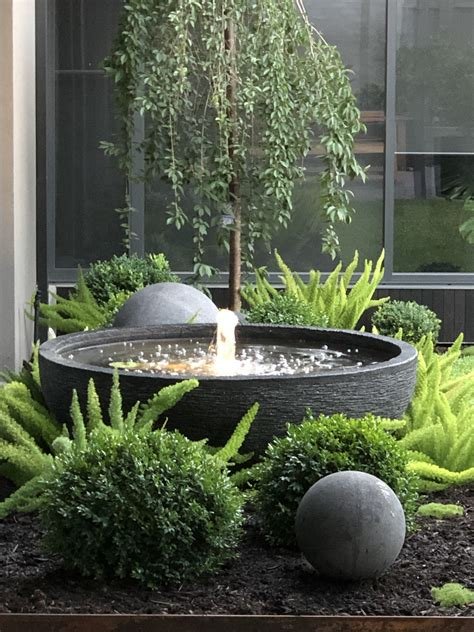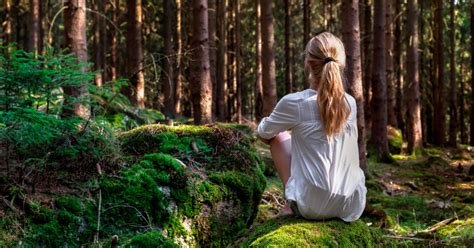The Role of Water Features in Garden Design
When it comes to designing a garden, there are countless elements to consider in order to create a beautiful and tranquil outdoor space. One such element that can greatly enhance the visual appeal and atmosphere of a garden is the incorporation of water features. From serene fountains to tranquil ponds, water features have the ability to add movement, sound, and a sense of calm to any garden setting. In addition to their aesthetic benefits, these features also have the ability to attract and support wildlife, making them a truly dynamic addition to any outdoor space. In this blog post, we will explore the various ways in which water features can be utilized in garden design, as well as the practical considerations and maintenance needed to ensure their longevity and beauty. Whether you’re looking to create a soothing retreat or a visually stunning focal point, water features offer endless possibilities for enhancing the beauty and tranquility of your garden.
Enhancing Visual Appeal with Water Features
Water features are an excellent way to enhance the visual appeal of any outdoor space. Whether it’s a small backyard garden or a sprawling estate, the addition of a water feature can instantly elevate the aesthetics of the area.
One of the key benefits of incorporating water features into garden design is the soothing and calming effect they have on the surrounding environment. The sight and sound of flowing water can create a peaceful atmosphere, making the outdoor space a perfect retreat for relaxation and contemplation.
When choosing the right water feature for your garden, consider factors such as size, style, and location. A well-placed fountain, pond, or waterfall can serve as a focal point, drawing the eye and adding interest to the overall design of the space.
Integrating water features with plants in garden design can also enhance visual appeal. The combination of lush greenery and the reflective surface of water creates a dynamic and captivating landscape that is sure to impress.
Creating a Soothing Atmosphere with Water Features
Water features can transform any outdoor space into a tranquil retreat, providing a sense of calm and relaxation. Whether it’s a pond, fountain, or waterfall, the gentle movements and soothing sounds of water can create a peaceful atmosphere that is perfect for unwinding after a long day.
By incorporating water features into your garden design, you can create a serene and inviting environment that promotes stress relief and mental well-being. The sight and sound of flowing water have been scientifically proven to reduce anxiety and promote a sense of tranquility, making it an ideal addition to any outdoor space.
In addition to its calming effects, water features also add visual interest to the landscape, enhancing the overall aesthetics of the garden. The reflective properties of water can create a sense of depth and spaciousness, making the outdoor space feel more expansive and inviting.
Whether you choose a small, self-contained feature or a larger, more elaborate installation, incorporating water features in your garden design can help you create a soothing atmosphere that promotes relaxation and rejuvenation.
Using Water Features to Attract Wildlife
Water features are a beautiful addition to any garden, but they can also serve a practical purpose in attracting wildlife. By incorporating a pond or water fountain into your garden design, you can create a habitat for various species of birds, insects, and even amphibians. The sound of running water can attract birds looking for a place to drink and bathe, while the water itself can support a range of aquatic life.
When designing a water feature to attract wildlife, it’s important to consider the depth and shape of the feature. Different species have different requirements when it comes to water depth, so by creating varying levels within your pond, you can accommodate a wider range of wildlife. Incorporating shallow areas can provide a safe space for smaller animals such as frogs and insects, while deeper areas can support fish and other aquatic creatures.
Adding water plants to your feature is also a great way to attract wildlife. Not only do water plants provide shelter and food for various animals, but they also help to oxygenate the water, creating a healthier environment for aquatic life. Plants such as water lilies and duckweed can provide cover for fish and amphibians, while attracting insects and birds looking for nectar and seeds.
Overall, water features can be a valuable addition to any garden, serving as both a beautiful focal point and a haven for wildlife. By carefully planning and designing your water feature to accommodate the needs of various species, you can create a thriving ecosystem that adds a new dimension of life and energy to your outdoor space.
Choosing the Right Water Feature for Your Garden
When considering adding a water feature to your garden, it’s important to choose the right one to complement your outdoor space. Whether you have a small courtyard or a spacious backyard, there are a variety of water features to choose from, including fountains, ponds, waterfalls, and streams. Each type of water feature offers its own unique benefits and aesthetic appeal.
Before selecting a water feature, take into account the size and style of your garden. A larger garden may be able to accommodate a larger pond or a multi-tiered fountain, while a smaller garden may be better suited for a wall-mounted fountain or a compact water feature. Consider how the water feature will blend with your existing landscaping and hardscaping to ensure it enhances the overall visual appeal of your garden.
Another important factor to consider when choosing a water feature for your garden is the maintenance and upkeep required. Ponds and waterfalls may require more frequent maintenance, such as cleaning and algae control, compared to a self-contained fountain. Additionally, consider the impact of the water feature on local wildlife and ensure it does not disrupt the natural environment of your garden.
Ultimately, the right water feature for your garden will be one that enhances the natural beauty of your outdoor space while also being compatible with your lifestyle and maintenance capabilities. Whether you envision a tranquil garden pond or a dramatic cascading waterfall, selecting the perfect water feature will elevate the ambiance of your garden and provide a serene oasis for relaxation and enjoyment.
Benefits of Incorporating Water Features in Garden Design
Adding a water feature to your garden can bring numerous benefits. Not only do water features enhance the visual appeal of your outdoor space, but they also create a soothing atmosphere that can help reduce stress and anxiety. The gentle sound of flowing water can have a calming effect, making your garden a peaceful retreat from the hustle and bustle of everyday life.
Furthermore, incorporating water features into your garden design can attract wildlife, such as birds and butterflies, creating a more vibrant and dynamic environment. Watching these creatures interact with the water adds an extra layer of enjoyment to your outdoor space.
In addition to the aesthetic and environmental benefits, installing a water feature can also increase the value of your property. A well-designed water feature can serve as a focal point in your garden, adding a sense of luxury and sophistication to your outdoor living space.
Finally, using water features in your garden design can also help to regulate the temperature, making the space more comfortable during hot summer days. The evaporative cooling effect of water can make your garden a more enjoyable place to spend time outdoors, even in the peak of summer.
Water Features as Focal Points in Garden Design
When designing a garden, one of the key elements to consider is how to create focal points that draw the eye and add interest to the space. Incorporating water features into your garden design is an excellent way to achieve this. Whether it’s a sparkling fountain, a tranquil pond, or a meandering stream, water features have the ability to captivate and create a sense of calm and tranquility in the garden.
One of the main benefits of using water features as focal points in garden design is their ability to create a sense of harmony and balance. The movement and sound of water can provide a soothing and calming effect, making it an ideal focal point for relaxation and contemplation. Additionally, water features can also attract wildlife, further adding to the visual appeal of the garden.
When choosing the right water feature for your garden, it’s important to consider the size and scale of your space. A small courtyard may benefit from a simple wall-mounted fountain, while a larger garden may be able to accommodate a more expansive pond or waterfall. The positioning of the water feature is also crucial, as it should be placed in a way that it can be easily seen and enjoyed from different areas of the garden.
Overall, water features can be an excellent addition to any garden design, providing not only visual appeal but also adding a sense of tranquility and harmony to the space. By carefully selecting and integrating the right water feature, you can create a captivating focal point that enhances the overall aesthetic and ambiance of your garden.
Practical Considerations for Installing Water Features
When it comes to adding water features to your garden, there are several practical considerations that need to be taken into account before installation. One of the most important considerations is the location of the water feature. You’ll want to place it in an area that gets the right amount of sunlight and shade, and that also has access to water and electricity if needed.
Another important consideration is the size and scale of the water feature. You’ll need to take into account the size of your garden and the surrounding landscape in order to ensure that the water feature doesn’t overwhelm or underwhelm the space. It’s also important to consider the maintenance requirements of the water feature. Some features may require more upkeep than others, so it’s important to choose one that fits with your lifestyle and level of commitment to garden maintenance.
Additionally, you’ll want to consider the materials and construction of the water feature. Will it be made of stone, concrete, or another material? Will it be a pre-fabricated feature or a custom design? Each of these factors will impact the installation process and the overall look and feel of the feature in your garden.
Lastly, it’s essential to consider the environmental impact of the water feature. You’ll need to ensure that the feature is not only visually appealing but also environmentally friendly, and that it won’t have a negative impact on local wildlife or the surrounding ecosystem.
Adding Movement and Sound to the Garden with Water Features
When it comes to designing a garden, one of the key elements to consider is how to incorporate movement and sound to create a more dynamic and engaging outdoor space. Water features are an excellent way to achieve this, as they can add both visual interest and auditory stimulation to any garden.
One of the most common ways to add movement and sound to the garden with water features is by incorporating a fountain. Fountains come in a variety of styles and sizes, and can be easily customized to fit the overall aesthetic of the garden. The sound of flowing water can create a soothing atmosphere and mask unwanted noise from nearby streets or neighbors.
In addition to fountains, waterfalls are another great option for adding movement and sound to the garden. Whether natural or man-made, waterfalls can create a dramatic focal point and provide a sense of tranquility. The sight and sound of water cascading over rocks can truly transform a garden space and make it a more inviting and peaceful environment.
Finally, ponds and streams can also be used to introduce movement and sound to the garden. The gentle flow of water and the presence of wildlife can bring a sense of life and energy to the outdoor space. Additionally, incorporating aquatic plants and fish can further enhance the visual appeal and provide an opportunity for interactive and educational experiences for garden enthusiasts of all ages.
Integrating Water Features with Plants in Garden Design
Integrating water features with plants in garden design can create a harmonious and beautiful outdoor space. By strategically placing water features amidst lush greenery, you can enhance the visual appeal of your garden and create a more natural and inviting environment. From elegant fountains surrounded by colorful flowers to serene ponds nestled among tall grasses, there are countless ways to integrate water features with plants to elevate your garden design.
One of the key benefits of integrating water features with plants is the ability to attract and support wildlife. By incorporating elements such as bird baths, shallow pools, or water-loving plants, you can provide a valuable source of water for birds, bees, butterflies, and other wildlife. This not only adds another layer of beauty and interest to your garden but also contributes to the overall ecosystem and biodiversity in your outdoor space.
When choosing water features to integrate with plants in your garden, it’s important to consider the practical aspects of maintenance and care. Selecting the right size and type of water feature that complements the scale and style of your garden will ensure a seamless integration with the surrounding plants. Additionally, choosing water-loving plants or those that thrive in moist conditions can further enhance the cohesiveness of the design, creating a harmonious blend of water and greenery.
Overall, integrating water features with plants in garden design offers a multitude of benefits, from enhancing visual appeal to attracting wildlife and creating a tranquil and soothing atmosphere. With careful planning and thoughtful selection of water features and plants, you can create a truly immersive and captivating garden space that seamlessly blends the beauty of water with the lushness of flora.
Maintaining Water Features for Longevity and Beauty
One of the most important aspects of having a water feature in your garden is ensuring that it is properly maintained to ensure its longevity and beauty. Water features, such as fountains, ponds, and waterfalls, can add a sense of tranquility and beauty to any outdoor space, but they do require regular maintenance to keep them looking their best.
One key aspect of maintaining water features is keeping the water clean and free of debris. This can be achieved by using a combination of filtration systems, pumps, and regular cleaning to prevent the build-up of algae, leaves, and other debris that can detract from the visual appeal of the water feature. Regularly skimming the surface and cleaning out any accumulated debris can help to maintain the beauty of the water feature.
In addition to keeping the water clean, it is also important to maintain the surrounding area of the water feature. This can involve trimming back overgrown plants, removing any dead foliage, and keeping the edges of the water feature tidy. By regularly maintaining the landscaping around the water feature, you can help to enhance its overall beauty and ensure that it continues to be an attractive focal point in your garden.
Regular maintenance of the mechanical components of the water feature, such as pumps and filters, is also essential for ensuring its longevity and beauty. By regularly inspecting and servicing these components, you can help to prevent any potential issues that could affect the performance and visual appeal of the water feature. Taking the time to properly maintain the mechanical components can help to prolong the life of the water feature and keep it looking beautiful for years to come.
Frequently Asked Questions
How can water features enhance the visual appeal of a garden?
Water features can add a sense of tranquility and beauty to a garden, creating a focal point and reflecting the surrounding plants and sky.
What are some practical considerations for installing water features in a garden?
Consider factors such as the size of the space, access to water and power sources, and the type of water feature that best suits the overall design and maintenance needs of the garden.
What are the benefits of incorporating water features in garden design?
Water features can attract wildlife, provide a soothing atmosphere, and add a sense of movement and sound to the garden. They also contribute to the visual and sensory experience of the outdoor space.
How can water features be used to attract wildlife to a garden?
Water features such as bird baths, ponds, and fountains can attract birds, butterflies, and other animals, providing them with a source of water and creating a habitat within the garden.
What are some tips for integrating water features with plants in garden design?
Choose water-loving plants to surround the water feature, and consider how the colors, shapes, and textures of the plants can complement the water feature to create a harmonious and cohesive design.
How can water features be maintained for longevity and beauty?
Regular cleaning, checking for leaks, and maintaining water quality are essential for the longevity and beauty of water features. It’s also important to winterize water features in colder climates to prevent damage.
How can water features be used as focal points in garden design?
Strategically placing water features in the garden can create a focal point that draws the eye and adds interest to the overall design. The water feature can become a centerpiece that anchors the rest of the garden.






